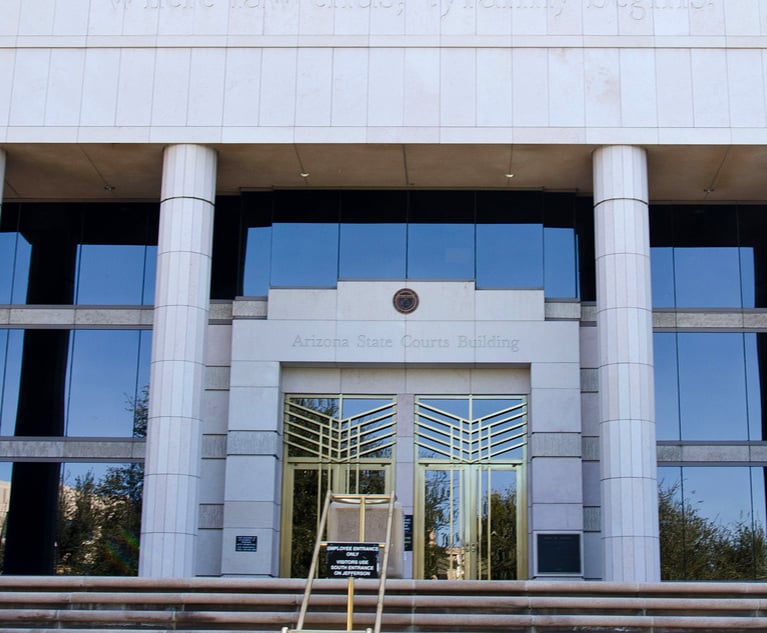Commentary: What history says will happen to firms' financial results in 2009
How do you gauge the performance of law firms in any given year? For what it's worth, at Legal Week our starting point is historical data. The early-1990s recession isn't much help, as figures back then were comparatively scarce, and firms were totally different animals. But there are reliable numbers on major firms from the previous decade. Looking back at the last cyclical downturn, we can get a sense of how the top 50 perform in slower deal markets. In 2001-02, the group as a whole saw revenue growth slow to 8.6%, while average profits per equity (PEP) fell 0.9%. In 2002-03, revenue growth slowed to 5.1%, while on average profits fell 1.1%. Revenue growth was at its slowest the following year, at 4.6%, but by then firms had cut costs, so profits rose by 6%. From 2004, the market took off.
May 27, 2009 at 10:38 PM
3 minute read
There's a lot of numbers out there that give clues to how firms perform in a recession
How do you gauge the performance of law firms in any given year? For what it's worth, at Legal Week our starting point is historical data. The early-1990s recession isn't much help, as figures back then were comparatively scarce, and firms were totally different animals. But there are reliable numbers on major firms from the previous decade. Looking back at the last cyclical downturn, we can get a sense of how the top 50 perform in slower deal markets. In 2001-02, the group as a whole saw revenue growth slow to 8.6%, while average profits per equity (PEP) fell 0.9%. In 2002-03, revenue growth slowed to 5.1%, while on average profits fell 1.1%. Revenue growth was at its slowest the following year, at 4.6%, but by then firms had cut costs, so profits rose by 6%. From 2004, the market took off.
 Obviously, the current slowdown is far worse than that of 2001 to 2003, a period in which deal markets slumped and the TMT bubble burst – but most Western economies never got near a technical recession, let alone a banking crisis. So looking at more recent data, H1 figures for 2008-09 that show the impact of the credit crunch – but not the banking meltdown after the collapse of investment bank Lehman Brothers – gives some more guidance. The 20 firms for which we have reasonably reliable numbers are split into two camps: large City firms outside the magic circle that grew strongly off the back of busy foreign offices and a strong euro, and regional and domestically-focused City firms that generally saw static or modest income falls. Overall, the international market was still growing, but legal service demand in the UK probably stopped expanding in H1.
Obviously, the current slowdown is far worse than that of 2001 to 2003, a period in which deal markets slumped and the TMT bubble burst – but most Western economies never got near a technical recession, let alone a banking crisis. So looking at more recent data, H1 figures for 2008-09 that show the impact of the credit crunch – but not the banking meltdown after the collapse of investment bank Lehman Brothers – gives some more guidance. The 20 firms for which we have reasonably reliable numbers are split into two camps: large City firms outside the magic circle that grew strongly off the back of busy foreign offices and a strong euro, and regional and domestically-focused City firms that generally saw static or modest income falls. Overall, the international market was still growing, but legal service demand in the UK probably stopped expanding in H1.
So what of the post-Lehman period? US law firms act as a yardstick to measure against. As they operate a similar model to UK firms, their results typically shadow large UK practices. Figures from The American Lawyer show revenue at top 100 firms was up 4.1% in 2008, which slowed from 13.6% the previous year, while profits fell by 4.3%. The harder-hit New York firms saw a general revenue decrease of around 4%, while PEP was down around 12%.
However, with four more months of recession trading, UK firms will do worse. Early indications of 2008-09 results show the chasing pack are on course to outperform the market, with roughly static revenues but lower profits. We also drew on responses from 102 partners regarding their 2008-09 results, which found 59% expecting falls in revenue year-on-year, while 24% expect income growth. Sharp currency movements over the year will also have flattered sterling revenues for City firms with substantial Eurozone practices. Given how internationally-focused the UK's top 25 law firms are, currency movements could quite possibly put 3% 'growth' onto the top 50′s sterling revenue as a whole.
This content has been archived. It is available through our partners, LexisNexis® and Bloomberg Law.
To view this content, please continue to their sites.
Not a Lexis Subscriber?
Subscribe Now
Not a Bloomberg Law Subscriber?
Subscribe Now
NOT FOR REPRINT
© 2025 ALM Global, LLC, All Rights Reserved. Request academic re-use from www.copyright.com. All other uses, submit a request to [email protected]. For more information visit Asset & Logo Licensing.
You Might Like
View All
KPMG's Bid To Practice Law in US On Hold As Arizona Court Exercises Caution

Combative Arguments at EU's Highest Court Over Google's €4.13B Antitrust Fine Emphasize High Stakes and Invoke Trump
4 minute read
Law Firms 'Struggling' With Partner Pay Segmentation, as Top Rainmakers Bring In More Revenue
5 minute readTrending Stories
- 1Uber Files RICO Suit Against Plaintiff-Side Firms Alleging Fraudulent Injury Claims
- 2The Law Firm Disrupted: Scrutinizing the Elephant More Than the Mouse
- 3Inherent Diminished Value Damages Unavailable to 3rd-Party Claimants, Court Says
- 4Pa. Defense Firm Sued by Client Over Ex-Eagles Player's $43.5M Med Mal Win
- 5Losses Mount at Morris Manning, but Departing Ex-Chair Stays Bullish About His Old Firm's Future
Who Got The Work
J. Brugh Lower of Gibbons has entered an appearance for industrial equipment supplier Devco Corporation in a pending trademark infringement lawsuit. The suit, accusing the defendant of selling knock-off Graco products, was filed Dec. 18 in New Jersey District Court by Rivkin Radler on behalf of Graco Inc. and Graco Minnesota. The case, assigned to U.S. District Judge Zahid N. Quraishi, is 3:24-cv-11294, Graco Inc. et al v. Devco Corporation.
Who Got The Work
Rebecca Maller-Stein and Kent A. Yalowitz of Arnold & Porter Kaye Scholer have entered their appearances for Hanaco Venture Capital and its executives, Lior Prosor and David Frankel, in a pending securities lawsuit. The action, filed on Dec. 24 in New York Southern District Court by Zell, Aron & Co. on behalf of Goldeneye Advisors, accuses the defendants of negligently and fraudulently managing the plaintiff's $1 million investment. The case, assigned to U.S. District Judge Vernon S. Broderick, is 1:24-cv-09918, Goldeneye Advisors, LLC v. Hanaco Venture Capital, Ltd. et al.
Who Got The Work
Attorneys from A&O Shearman has stepped in as defense counsel for Toronto-Dominion Bank and other defendants in a pending securities class action. The suit, filed Dec. 11 in New York Southern District Court by Bleichmar Fonti & Auld, accuses the defendants of concealing the bank's 'pervasive' deficiencies in regards to its compliance with the Bank Secrecy Act and the quality of its anti-money laundering controls. The case, assigned to U.S. District Judge Arun Subramanian, is 1:24-cv-09445, Gonzalez v. The Toronto-Dominion Bank et al.
Who Got The Work
Crown Castle International, a Pennsylvania company providing shared communications infrastructure, has turned to Luke D. Wolf of Gordon Rees Scully Mansukhani to fend off a pending breach-of-contract lawsuit. The court action, filed Nov. 25 in Michigan Eastern District Court by Hooper Hathaway PC on behalf of The Town Residences LLC, accuses Crown Castle of failing to transfer approximately $30,000 in utility payments from T-Mobile in breach of a roof-top lease and assignment agreement. The case, assigned to U.S. District Judge Susan K. Declercq, is 2:24-cv-13131, The Town Residences LLC v. T-Mobile US, Inc. et al.
Who Got The Work
Wilfred P. Coronato and Daniel M. Schwartz of McCarter & English have stepped in as defense counsel to Electrolux Home Products Inc. in a pending product liability lawsuit. The court action, filed Nov. 26 in New York Eastern District Court by Poulos Lopiccolo PC and Nagel Rice LLP on behalf of David Stern, alleges that the defendant's refrigerators’ drawers and shelving repeatedly break and fall apart within months after purchase. The case, assigned to U.S. District Judge Joan M. Azrack, is 2:24-cv-08204, Stern v. Electrolux Home Products, Inc.
Featured Firms
Law Offices of Gary Martin Hays & Associates, P.C.
(470) 294-1674
Law Offices of Mark E. Salomone
(857) 444-6468
Smith & Hassler
(713) 739-1250









